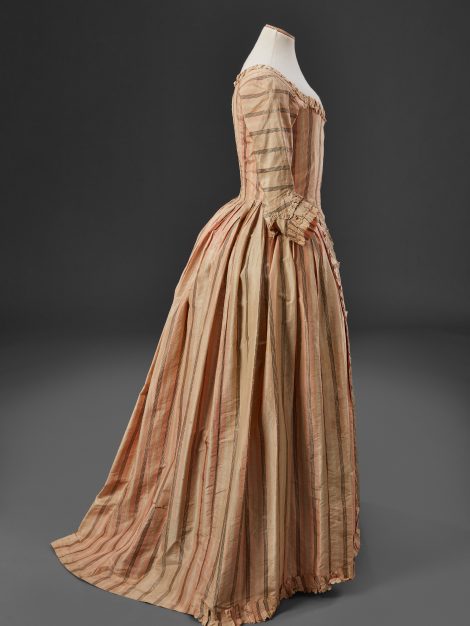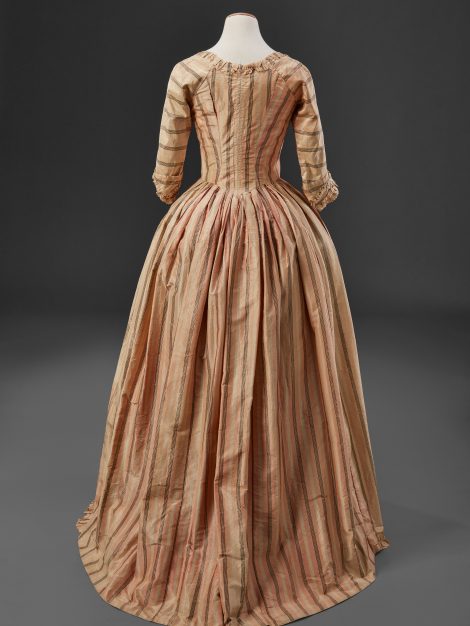Acquired from the costume designer Andrea Galer
Originally of a brighter shade of pink, this striped silk gown exudes a lively playfulness characteristic of the fashion of its time. In the 1770s, silks woven with plain stripes and small motifs began to replace the elaborate large-scale patterns of earlier decades. These textile designs express a taste for ‘simplicity’ that defines the years leading up to the French Revolution.
Unfortunately, the gown’s original petticoat has not survived. It would either have been made of matching material or of a contrasting fabric. The unrelated quilted reproduction petticoat used in this photograph can only serve as an approximation.
The construction of this type of gown was also called ‘Robe à l’Anglaise’ (English gown), set apart from the sack back gown or ‘Robe à la Française’ (French gown) by the fitted back of its bodice and its centre front fastening. This example would have been fastened with pins, a common practice in the 18th Century. The self-frills adorning this gown have been finished with scalloped edges punched into the fabric with a device called ‘pinking iron’. Different sizes of scallops were used, corresponding to the scale of the frill and its location on the gown, adding to the finesse of the garment. The narrow cuffs follow the bent of the elbow and retain a short top tier reminiscent of the flounces that were replaced by this style.
Two pairs of tapes inside the skirt allow the wearer a practical and fashionable option: the top tapes are placed in the back side waist, their counterparts at about knee level below. When tied together, these draped the skirt up in an attractive manner and at the same time helped prevent potential damage by lifting the hemline off the floor.






